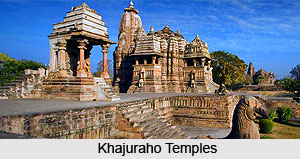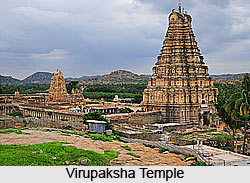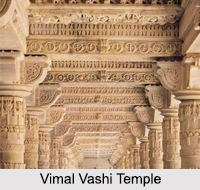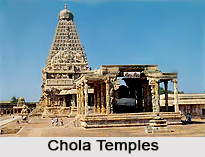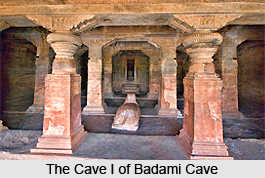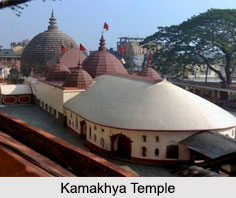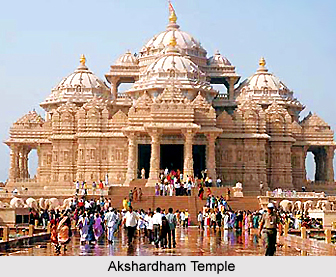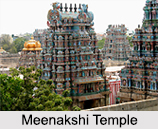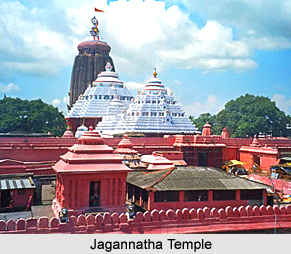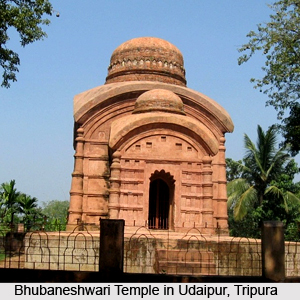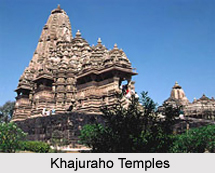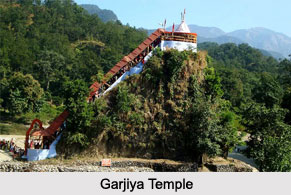 Garjiya Temple is visited by thousands of devotees from different parts of the state or country. A large fair is held here on kartik Poornima. This temple is built on a rock in the middle of river Kosi and visited by thousands of devotees during Kartik Poornima, a Hindu holy day celebrated on the fifteenth lunar day of Kartik (November - December). It is also known as the festival of lights of the Gods. Devi Gajariya is easily pleased with the true devotion of Her devotees. While praying, the devotees offer the Devi coconut, red clothes, kumkum etc.
Garjiya Temple is visited by thousands of devotees from different parts of the state or country. A large fair is held here on kartik Poornima. This temple is built on a rock in the middle of river Kosi and visited by thousands of devotees during Kartik Poornima, a Hindu holy day celebrated on the fifteenth lunar day of Kartik (November - December). It is also known as the festival of lights of the Gods. Devi Gajariya is easily pleased with the true devotion of Her devotees. While praying, the devotees offer the Devi coconut, red clothes, kumkum etc.
Location of Gajariya Temple
Gajariya Devi Temple is situated in Garjiya at a distance of 12 KM from RamNagar on Dhikala road. It is a sacred Shakti shrine where Garjiya Devi is the presiding deity.
History of Gajariya Temple
Gajariya Temple of Phulher in Bihar has a legend attached to it. It is situated at Phulher village about 40 miles north-west of Darbhanga railway station of the North-Eastern Railway. The legend revolves round Lord Rama and Sita. Sita`s father King Janaka used to visit phulher and The Pool nearby was the place where Sita would have her bath, sit by and make the garlands of flower for offering to the deity. One day Sita was making garlands with her companion and Sri Ramachandra had also gone there with Lakshmana and was plucking flowers. Sita`s eyes fell on Rama and he was also captivated by her. Balakanda of Ramayana depicts this meeting in an attractive manner. This temple, with its tradition of Sita meeting Rama for the first time and the subsequent marriage of all the four sons of King Dasharath of Ayodhya to the four daughters of King Janaka reveals the enduring impact of the Rama-Sita cult which had permeated India through Mithila.
Ethnic Background of Gajariya Temple
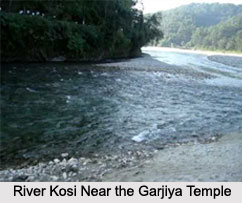 Prior to the year 1940, the area near the Kosi river had many forests. The surrounding areas were secluded. Despite the great noise, devotees started coming to this place. It is said that Goddess Durga sat at the hill of the vehicle and her lion used to make a great noise. Therefore people believe that the lions often seen orbiting the mound to be holy.
Prior to the year 1940, the area near the Kosi river had many forests. The surrounding areas were secluded. Despite the great noise, devotees started coming to this place. It is said that Goddess Durga sat at the hill of the vehicle and her lion used to make a great noise. Therefore people believe that the lions often seen orbiting the mound to be holy.
Surroundings of Gajariya Temple
This temple faces the east. There is a verandah at the entrance which is 10 feet by 12 feet. The cell where the deity is kept measures 8 feet by 10 feet. The height of the temple is near about 75 feet. The image of the main deity of the temple, the goddess Gajariya, is around 2 feet high and made of black stone. To the right side of this deity is a two-foot image of Janaki, made of marble. To the left side of the deity of Gajariya are the images of Lord Ganesha, Goddess Kali, Goddess Durga, Lord Vishnu and Lord Shiva. All these images are made of black stone. All other images excepting the main deity were installed later.
To the right side of this temple, there is a temple of Bhairav as well as a big tank. Vaishnava priests look after the temple. The Phalgun month is observed specially by the visitors. Devotees undertake Panch Kosi Yatra and walk ten miles visiting other temples that are located nearby.
There is also a temple of Laxmi-Narayan in the same temple premises. The idols of this temple were found during excavation here. It is believed that the prayers here are not complete until the devotee worships Bhairava after worshipping Gajariya Devi.
Visiting Information to Gajariya Temple
Ramnagar is well connected through train and bus services. One can take a taxi from Ramnagar to reach here. The nearest railway station is Ramnagar station. The Patnagar airport is just 50km from Ramnagar.
